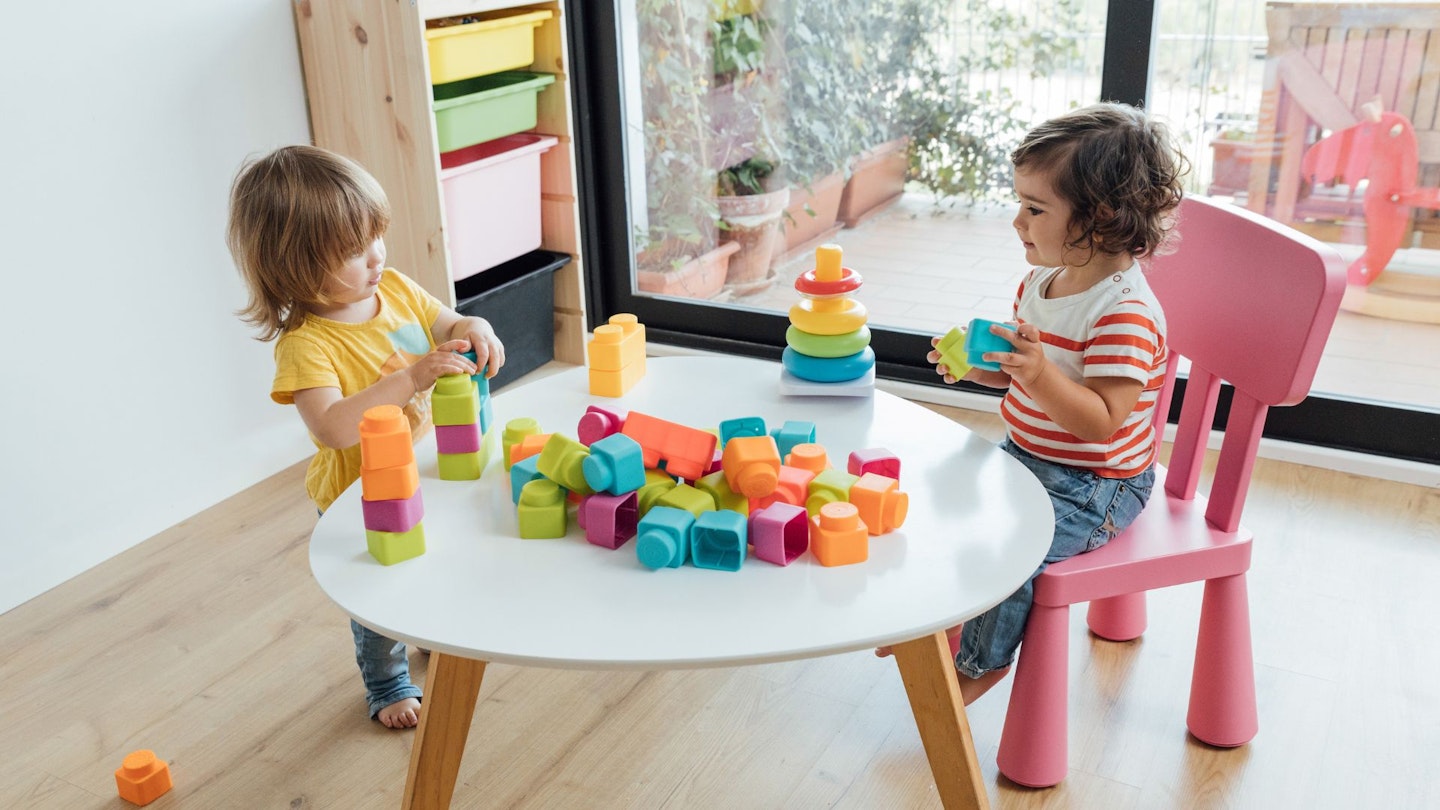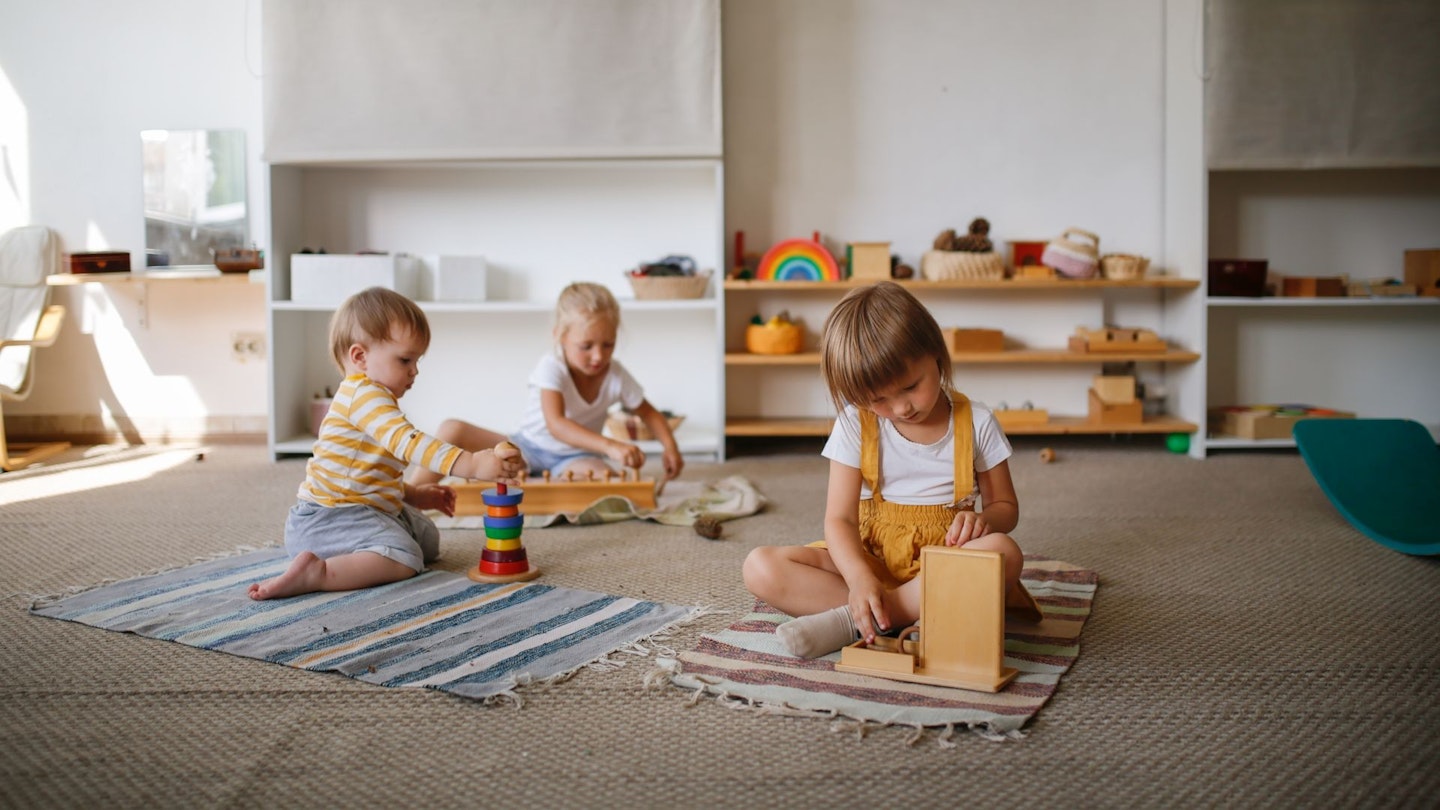Did you know that your toddler playing alongside others, rather than with them, (also known as parallel play) can be a healthy part of your little ones development?
We all know how important play is for reaching different toddler milestones and developing different skills, and while you might want to encourage your child to play with those around them, it's perfectly normal for them to want to play by themselves.
Known as parallel play, it's a form of playing that will involve your toddler playing next to one or several other children. The children won't interact with each other, but they'll still watch and mimic what the other child does. An example of this would be two children playing with train tracks, but rather than communicating with each other, they are watching what the other child is doing and copying their actions.
Why is parallel play important?

There are many reasons why parallel play is important for your toddlers development and it's also a perfectly normal way of playing.
Skills development
When children play, they use their skill sets and will develop their skills sets such as fine and gross motor. By repeating an activity they have seen, they can test their skills and might learn something new. Similar to the benefits of imaginative play where children play kitchens or run a shop, there's no right or wrong way of them playing.
Language development
Toddlers speech development comes from hearing words repeatedly and learning how to apply them in context. It goes without saying that they will probably repeat words you've used before, but not sat and taught them it.
So through watching other children play and perhaps naming an action or toy a certain word, they'll but processing that word and will perhaps use it later (they might even surprise you with it!)
Social interaction
You might be tempted to encourage your child to play with other children nearby, and may wonder why they don't want to. It's actually perfectly normal for your child to want to play independently, and through parallel play your child will start to understand social interaction for when they are ready to play with other children.
Not all interactions are positive, but there's a lot to learn from this as your toddler gets older and has more understanding of the world.
Sharing and turn taking
Toddlers who are still in the stage of parallel play will probably still possessive of their toys, meaning they won't share. This isn't because your child can't share, but more that they don't understand how to share yet.
While they might be playing independently, your child or their parallel play buddy, might interrupt their play and want their toy. Through practise, you can help them to understand how to share toys and take turns with what they're playing with.
What are the different stages of play?
There are six stages of play according to Pathways, with the first starting at birth. Some of the stages of play can also overlap with other stages, as your little one develops and learns new skills.
Unnocupied play: birth up to three months
Solitary play: birth up to two years
Onlook play: between 24 to 36 months
Parallel play: two years+
Associate play: between three and four years
Cooperative play: four years+
How do I encourage my child to play?
There is no right or wrong way to encourage your child to play and you can't rush their development. The best way to support your child is through engaging with them through exploration. Whether that be on a walk together, allowing them to independently play with developmental or sensory toys and even through playing with them.
Samantha Ball is a Product & Lifestyle Writer for Mother&Baby and freelanced for the website for two years before joining the team full time. She's a mum of two and loves browsing for the best products and cute outfits.
